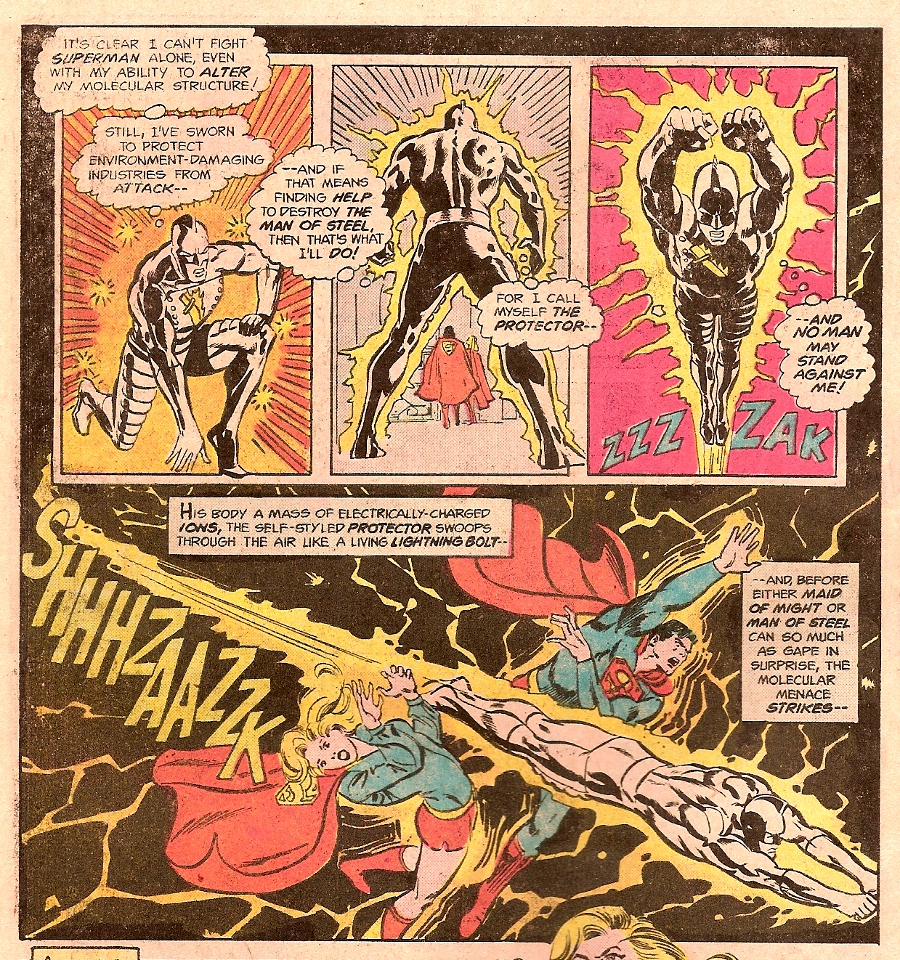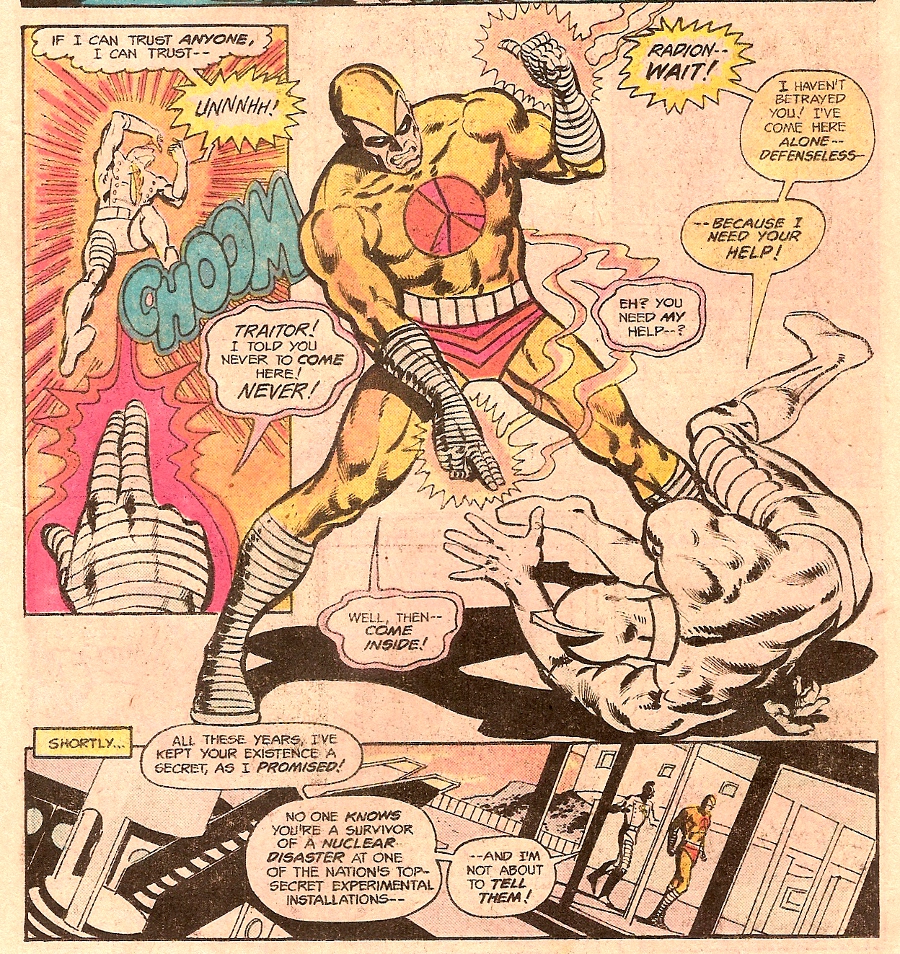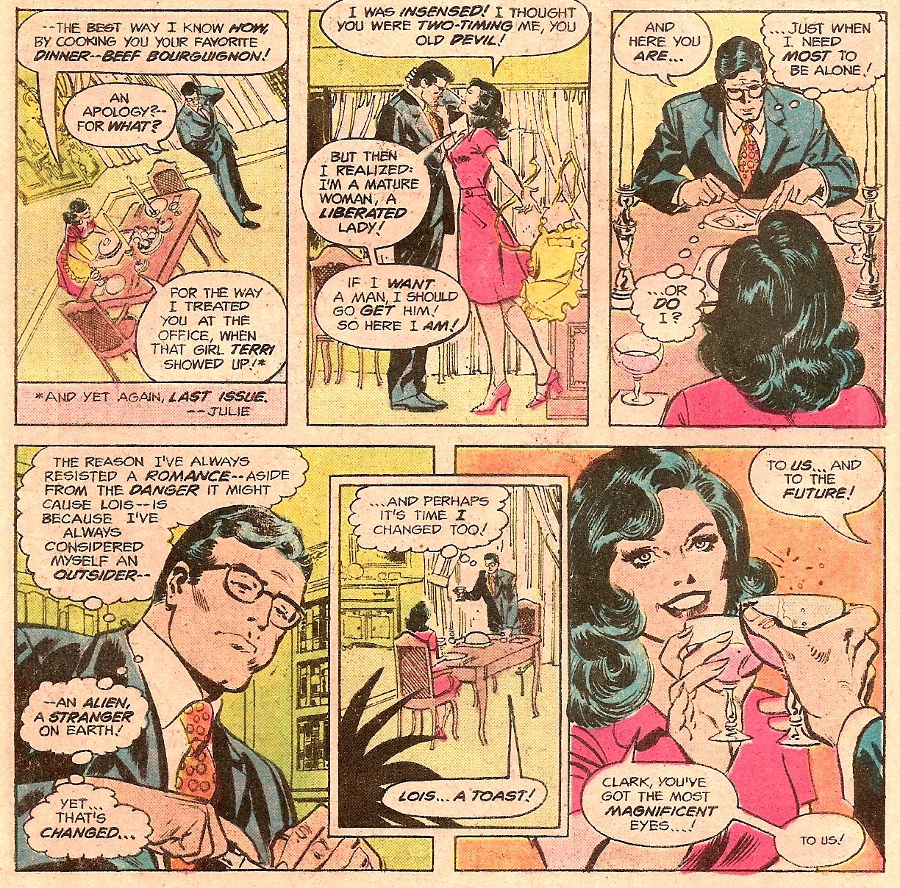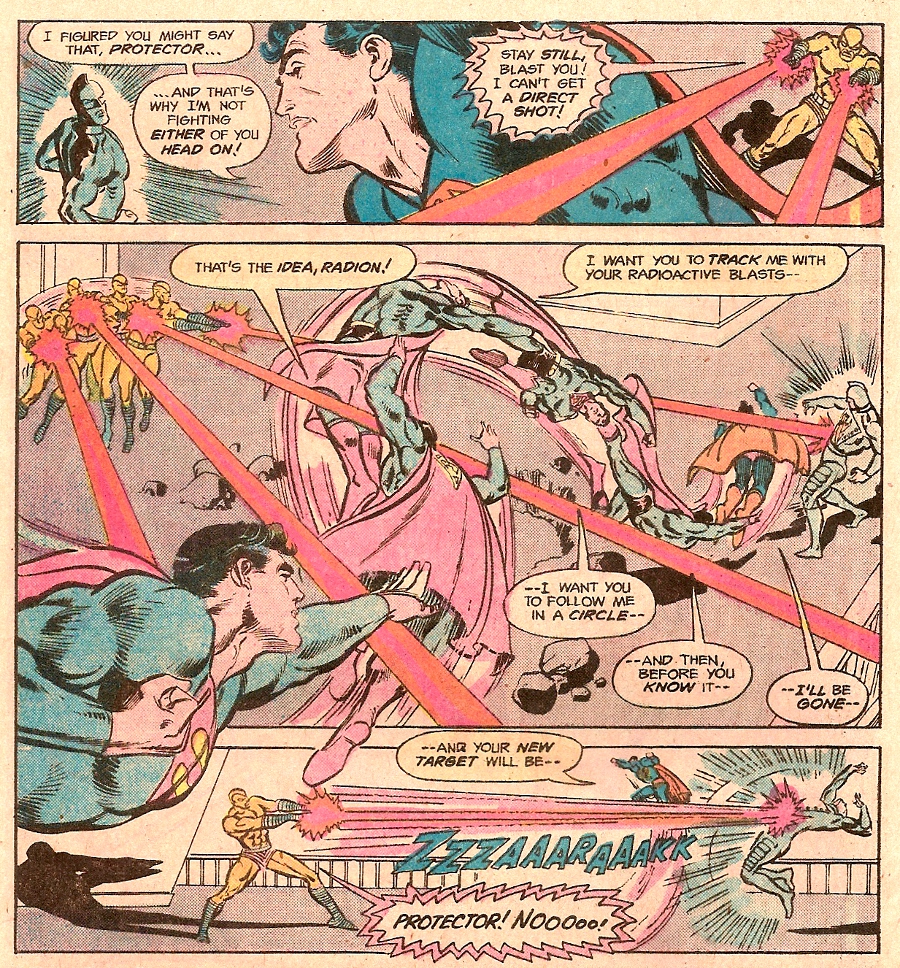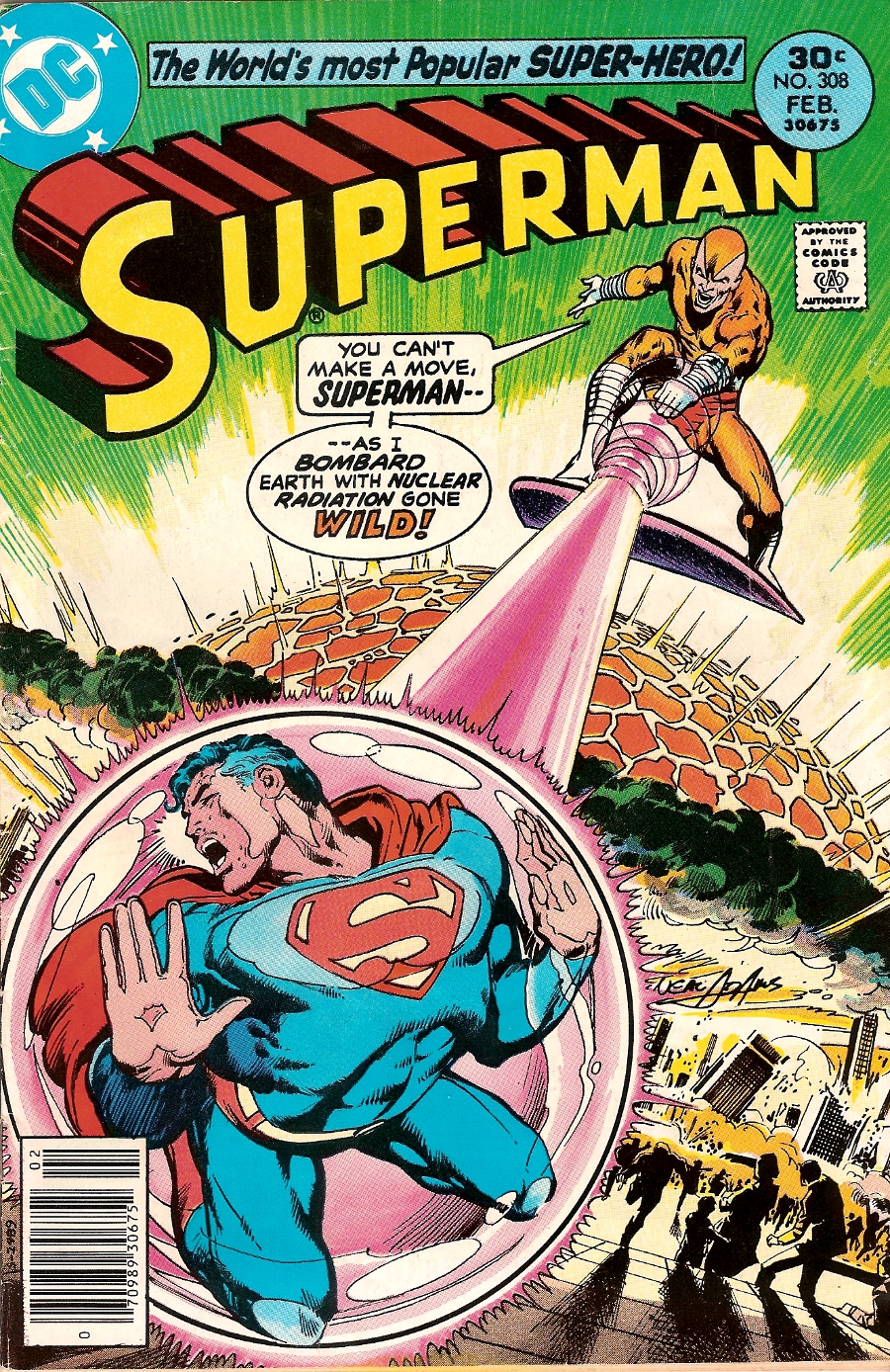 Two weeks ago, we discussed a Superman storyline from 1971 which supposedly ended in a permanent change to the character. Then last week, we saw the issue immediately following the end of that storyline, which seemed to have returned to the old status quo. Â The previous “permanent” change was quietly forgotten.
Two weeks ago, we discussed a Superman storyline from 1971 which supposedly ended in a permanent change to the character. Then last week, we saw the issue immediately following the end of that storyline, which seemed to have returned to the old status quo. Â The previous “permanent” change was quietly forgotten.
So by the time I hit junior high, I made the switch to Marvel from DC. I was coming to appreciate the more sophisticated storytelling possibilities of the continuing serial over DC’s one-shot issues. I largely abandoned Batman and Superman then in favor of Hulk and Spider-Man. I still bought some DC titles, but they were the oddballs like Shade, the Changing Man.
I’m not sure what led me in early 1977 (or maybe at the very end of 1976) to buy this one issue of Superman. Maybe it was the awesome Neal Adams cover. But when I began reading it, I was totally confused, in part because it felt more like a Marvel comic than a DC one.
And there’s a reason for that. This issue was written by Gerry Conway, who had been writing The Amazing Spider-Man when I first began following that title regularly. And rather than the stalwart team of Curt Swan and Murphy Anderson, the art chores here are by penciller Jose Luis Garcia Lopez, with Frank Springer on inks.
The story opens in the middle of an argument between Superman and Supergirl. In the previous issue, Supergirl had dropped the bombshell revelation that Superman did not actually come from Krypton. There had never been such a place, except in young Clark Kent’s imagination. There had been no exploding planet, no rocket ride to Earth, no Kandor, no Phantom Zone.
Clark was the son of Jonathan Kent, who had worked in a nuclear plant and had suffered a dose of radiation which altered his genes. Kara was not Clark’s cousin from Krypton, but the daughter of a co-worker who had gone through the same thing. And all of the Kryptonian history and relics and adventures were supposedly a product of Clark’s fantasies, a way of rationalizing his special abilities.
Their conversation is interrupted by the Protector, the villain from the previous issue whom Superman had just defeated. Why is he called the Protector?
Sworn to protect polluters. Yeah, I totally buy that. Anyway, it turns out that the Protector is also a radioactive mutant, and the help he seeks against Superman also comes in the form of a radioactive mutant named Radion.
So why all this emphasis on radioactive mutants all of a sudden? I thought then and I think now that it was in reaction to something that had happened over at Marvel. You see, there was a book at Marvel that had spent a few years hovering so close to cancellation that they hadn’t even been spending money to make new stories, just publishing reprints of past issues over and over again. But a couple of years before this issue came out, writer Len Wein had teamed up with artist Dave Cockrum (who had come over from DC, where he had made a big splash drawing the Legion of Super-Heroes) to create an updated team with new members.
That team was, of course, the new Uncanny X-Men, and by 1977, mutants were starting to get hot. They hadn’t yet become a dominant force in comics, but as you can see by this issue of Superman, they were getting attention.
So anyway despite almost 40 years of continuity in which Krypton was constantly being mentioned, Superman quickly decides that maybe Kara’s telling the truth. He even lets himself start thinking about a romantic future with Lois Lane.
But then Radion attacks a nuclear power plant, planning to overload it and cause widespread mutations. Superman almost dies trying to stop him. Radion retreats to his secret hideout in the mountains, where he argues with Protector until Superman shows up. He taunts Radion, and uses his heat vision to trick Protector into making himself a living mirror. And then…
And as dumb as this issue is in almost every way, I did kind of think it was neat that the finale featured Superman battling these two evil versions of himself, just three atomic mutants having a difference of opinion. Except that we know that Supergirl was lying, because she called a mysterious someone to report on her progress with the lie.
Turns out that Supergirl was working on the advice of a Kryptonian psychologist from Kandor who thought Superman had become too obsessed with seeing himself as Earth’s protector, and so they had concocted the idea of making him think he came from Earth as a way of humbling him or something. But it all backfired when a ragtag alien fleet came under attack and needed Superman’s help to save them. Superman refused, because the problems of a bunch of random aliens were no longer his concern.
So Supergirl confessed the lie, and suddenly, Superman was a Kryptonian again. He ended up saving the aliens, and the whole “Mutant Superman” thing was forgotten and never mentioned again.
Which was good, because it was stupid.


